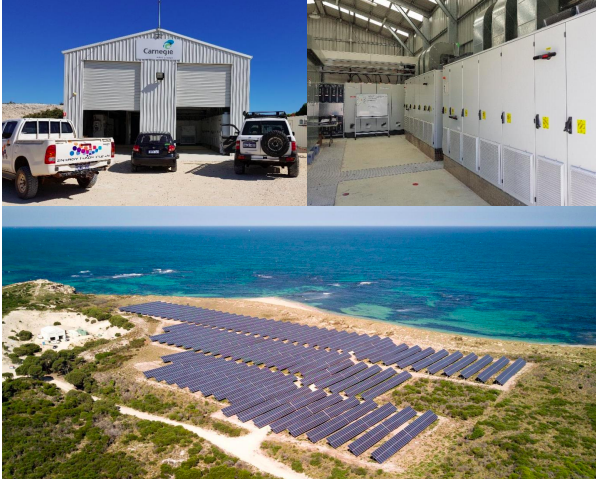Only days after submitting a funding plan for its troubled Albany wave power project, Carnegie Clean Energy has switched on one of its major microgrid project on Garden Island, Western Australia. Under a power purchase agreement inked with Australia’s Department of Defence, the project will supply the nearby HMAS Stirling naval base.
Noting that the system has already shown its ability to deliver a reduction in Garden Island’s peak load, the ASX-listed wave energy technology and solar/battery microgrid project developer said that the system is set to commence commercial operation upon receipt of the approval to operate.
The microgrid development had secured $2.5 million grant from the Australian Renewable Energy Agency (ARENA), as well as a $3.7 million debt financing agreement on top of $1.3 million in the company’s equity for the project, but is said to have suffered delays in final commissioning as a result of parallel infrastructure upgrades at the naval base.
The project includes the option for wave energy to be incorporated into the microgrid along with a desalination plant already in operation on site.
Albany wave project
Meeting a last-minute deadline to show it could fund its $26 million share of the $53 million Albany wave energy plant, Carnegie came up with a funding plan last week, which was set as a precondition for the company to receive the next installment of a state government grant.
“[Carnegie’s financial] plan is now under assessment. The assessment and a decision on next steps for the project is expected to take up to six weeks, and the State Government will provide further comment once the assessment is complete,” Minister for Regional Development Alannah MacTiernan said in a statement provided to pv magazine Australia.
The WA-based renewables developer is in line for a $15.75 million grant, under an agreement with the state government, provided it can foot its share of the development’s costs.
Last year, Carnegie had a rough ride, posting a $64 million loss in its interim results, including a $35 million write-down of its CETO wave power technology. On top of that, it has seen the departure of its long-serving managing director Michael Ottaviano.
Another big hit for the company came in December, when the deal to merge solar hybrid developer Energy Made Clean (EMC), Carnegie’s troubled subsidiary, with TAG Pacific’s M-Power fell through. At the time, non-executive Chairman Terry Stinson noted that EMC had performed “far below expectations” despite having established “a positive reputation in the market for technical capability, customer support, quality, and project delivery.”
The company has, however, managed to advance its pipeline of solar PV projects. Last year, its largest PV plant and WA’s first operational merchant utility solar project, the 10 MW Northam Solar Farm commenced exporting power to the grid and received approval to operate from Western Power. In addition, the solar and battery microgrid at the Delamere Air Weapons Range in the Northern Territory achieved practical completion. EMC’s CSIRO Pathfinder and RAF Delamere microgrid projects have been operational since August of last year.
This content is protected by copyright and may not be reused. If you want to cooperate with us and would like to reuse some of our content, please contact: editors@pv-magazine.com.









By submitting this form you agree to pv magazine using your data for the purposes of publishing your comment.
Your personal data will only be disclosed or otherwise transmitted to third parties for the purposes of spam filtering or if this is necessary for technical maintenance of the website. Any other transfer to third parties will not take place unless this is justified on the basis of applicable data protection regulations or if pv magazine is legally obliged to do so.
You may revoke this consent at any time with effect for the future, in which case your personal data will be deleted immediately. Otherwise, your data will be deleted if pv magazine has processed your request or the purpose of data storage is fulfilled.
Further information on data privacy can be found in our Data Protection Policy.